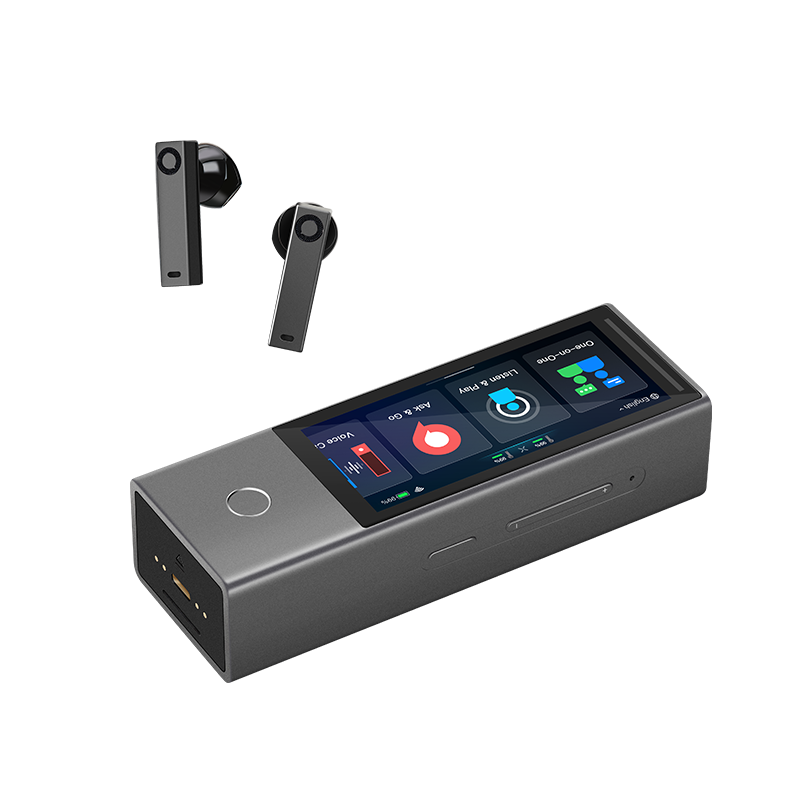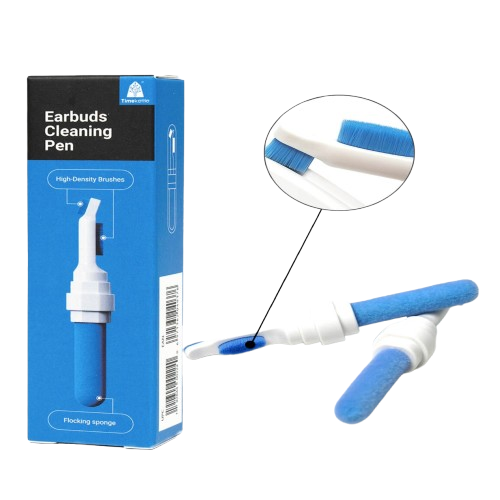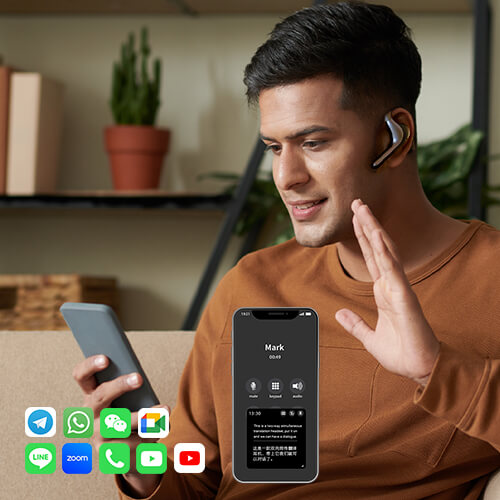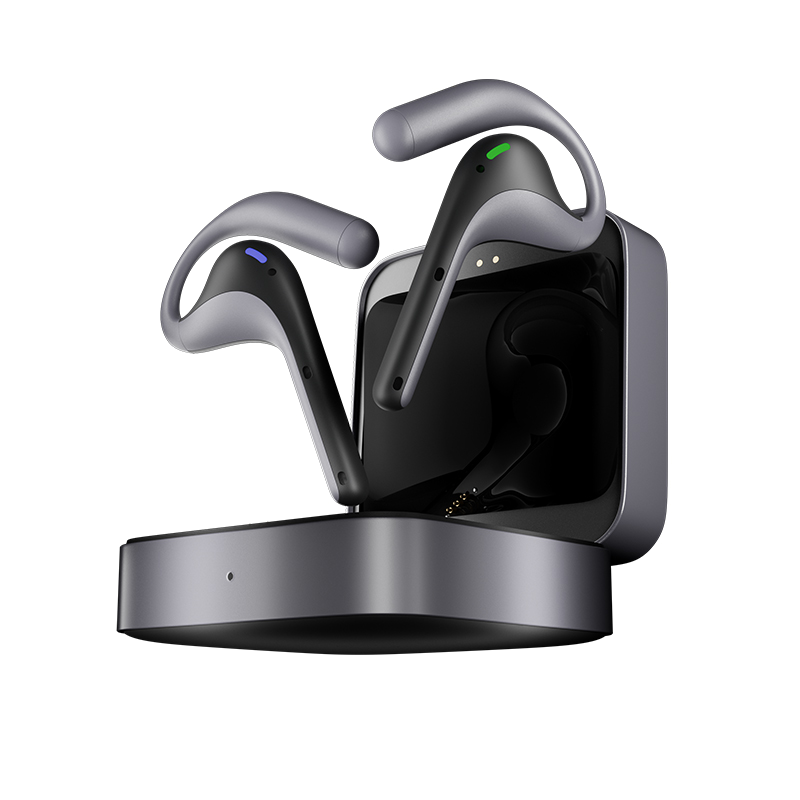
2025年全球業務擴展的頂級翻譯工具
翻譯軟體和工具構成了2025年的核心,使個人、自由職業者和企業能夠以多種語言交流。全球翻譯軟體市場預計將 到2025年達到370億美元,年複合成長率達16.5%. 人工智慧和神經機器翻譯已經徹底改變了這個行業,AI 驅動的系統提升了生產力高達 60%,並且將本地化成本降低40-50% 這些技術不僅提升效率,還能提供正確且具情境性的翻譯。選擇合適的工具能幫助您跨越語言隔閡,實現無縫的全球溝通。
翻譯工具類型
機器/即時翻譯工具
機器或即時翻譯軟體如 Google 翻譯、Microsoft 翻譯器和 DeepL 依賴先進的機器學習演算法,即時將文字轉換成目標語言。它們是基於網路的工具,非常適合對速度要求高於精確度的簡單翻譯需求。有些現在還包含圖像翻譯、文字轉語音和語音轉文字等附加功能,因此在行動中使用非常方便。
翻譯管理系統 (TMS)
翻譯管理系統(TMS)旨在協助企業將大量內容如行銷資料、應用程式、網站及文件本地化並翻譯至全球市場。大部分內容由機器翻譯產出,之後由人工語言專家進行後期編輯以確保準確性與語境。TMS使這一過程的自動化與組織化成為可能,否則在沒有技術軟體的情況下幾乎無法實現。
翻譯工具(包括電腦輔助翻譯工具)
與機器翻譯相反,電腦輔助翻譯(CAT)軟體並非被設計用來自動翻譯內容。相反地,熟練的人類譯者利用這些軟體來提升一致性、速度及品質。這些流行的CAT工具提供了翻譯記憶庫、術語管理、與機器翻譯整合、專案管理及自動化品質控制等功能。透過這些工具,語言專家能更有效率地完成工作,並在不增加成本的情況下產出高品質的翻譯。
企業翻譯解決方案

Timekettle 翻譯耳機
Timekettle 是人工智慧驅動翻譯技術的領先創新者,提供先進的翻譯耳機和 Polypal 平台,致力於為全球企業和個人打破語言障礙。Timekettle 的解決方案旨在提升跨語言溝通,結合即時翻譯耳機與 Polypal AI 平台,提供無縫、可擴展且高效的企業翻譯解決方案。
Timekettle 的翻譯耳機,例如 W4 Pro 和 X1 AI 口譯中心,利用尖端 AI 技術重新定義多語言溝通。由專有技術驅動 巴別操作系統 和 HybridComm 3.0 ,這些耳塞提供超過40種語言和93種口音的雙向即時翻譯,準確率高達95%。主要功能包括:
- 即時同步翻譯: 以最快0.5秒翻譯語音,實現自然流暢的對話,無需停頓。
- 多場景模式 支持多種使用情境,包括一對一對話、群組會議、電話通話及視訊會議,具備音訊儲存及 AI 生成會議摘要等功能。
- 離線翻譯 支援13種離線語言包,確保在無網路連接的地區仍能正常運作,非常適合偏遠或國際環境使用。
- 高級降噪: 採用3麥克風降噪技術,即使在嘈雜環境中也能捕捉清晰音頻,識別錯誤率較前代機型降低50%。
這款耳機專為企業使用而設計,提供安全、私密的翻譯功能,並能無縫整合到商業工作流程中,非常適合全球團隊、國際客戶會議及跨境協作。
優點
- 支持超過40種語言的即時翻譯,並具備離線功能,適合多元化企業需求。
- 耳機與 Polypal 平台的無縫整合,適用於混合通訊場景。
- 業界領先的人工智慧技術。
- 免費的OTA更新確保長期價值和持續進化的功能。
- 卓越的客戶支援,提供12個月保固及30天退貨政策。
缺點
- 大型翻譯記憶庫可能需要額外的設定來優化搜尋效率。
- 新用戶可能需要一些時間來掌握耳塞和Polypal的全部功能,但全面的支援能減輕這一過程。
Timekettle 提供了一個強大且以用戶為中心的解決方案,幫助企業消除語言障礙,促進全球連結。
Crowdin 是一款由人工智慧驅動的線上翻譯工具,專為軟體、網站和應用程式設計。它可整合超過600種開發工具和檔案格式,是大型企業在本地化內容和全球擴展時的熱門選擇。
優點:
- 與眾多開發工具和檔案格式的無縫整合
- 即時協作提升生產力與一致性
缺點:
- 對於較小的企業來說可能價格偏高,特別是還有翻譯記憶庫的額外費用
- 缺乏強大的視覺上下文功能,導致翻譯速度變慢並影響準確性
- 偶爾出現的技術問題,例如品質保證工具中的故障
AI 驅動的翻譯工具
由人工智慧驅動的翻譯工具已經徹底改變了我們翻譯內容的方式。這些工具使用先進的機器學習演算法,提供近乎即時的翻譯,非常適合快速交付和隨時隨地的需求。兩個最受歡迎的人工智慧翻譯工具是 DeepL 和 Google 翻譯。
DeepL
DeepL 是一個神經機器翻譯系統,以其準確性和自然流暢的翻譯聞名。它目前支援 33 種語言,主要是歐洲語言,並擅長捕捉細微的語言差異。DeepL 的一大優勢是能夠維持上下文和語氣,產出如同人類撰寫般高品質的翻譯。
優點:
- 高度準確且自然流暢的翻譯
- 有效維持語境與語氣
- 與電腦輔助翻譯(CAT)工具整合
- 內建自訂詞典以管理術語
缺點:
- 與某些競爭對手相比,語言支援有限
- 免費版本中的翻譯字數限制
- 字典管理僅在付費的專業版 API 中提供
- 缺乏全面的翻譯管理功能
Google 翻譯
Google 翻譯或許是最知名的 AI 翻譯工具,提供無與倫比的多功能性。它支援多達 249 種語言,能翻譯文字、語音、圖片,甚至即時影片。這種多功能性使 Google 翻譯成為休閒用戶和隨時隨地翻譯的便利選擇。
優點:
- 支持249種語言,涵蓋廣泛需求
- 免費用於文字、語音、圖片及影片翻譯
- 與其他 Google 服務如 Chrome 和 Gmail 無縫整合
缺點:
- 翻譯的準確性可能不穩定,尤其是對於複雜或細微的內容。
- 缺乏語境理解,常導致逐字翻譯
- 無法自訂以符合公司的語調和風格
- 不適用於專業或專門的翻譯工作
雖然人工智慧驅動的翻譯工具提供了速度和便利性,但重要的是要注意,它們可能無法始終提供專業或專門內容所需的準確度和細微差別。在這種情況下,可能需要考慮其他翻譯方案,或將人工智慧工具與人工專業知識結合使用。
專業翻譯工具
Lokalise
Lokalise 是一個線上平台,旨在簡化不同語言和地區的數位內容翻譯。它支援超過 20 種檔案格式,包括 JSON、XML 和 CSV,能夠無縫配合各種專案。Lokalise 採用基於鍵值的系統,取代傳統的檔案上傳,從而簡化即時更新和協作。此外,它還具備上下文編輯功能,讓翻譯者能夠看到其翻譯內容在最終產品中的呈現效果。
優點:
- 使用者友善介面
- 與開發及設計工具的廣泛整合選項
- 支持多種檔案格式
缺點:
- 有限的自訂選項
- 使用者權限管理可能會令人感到困惑
- 學習曲線陡峭
MemoQ 翻譯專業版
MemoQ Translator Pro 是由譯者為譯者打造的翻譯工具,旨在使他們的工作更快速且更精確。它具備翻譯記憶庫、術語管理工具、與機器翻譯引擎的整合,以及自動品質檢查功能。MemoQ 也支援多種檔案格式,並能與其他翻譯工具連接,使其在任何專案中都具備高度彈性。
優點:
- 術語管理系統以確保翻譯一致性
- 與大多數其他電腦輔助翻譯工具整合
缺點:
- 進階功能學習曲線陡峭
- 在舊硬體上處理大型專案時速度變慢
- 有限的即時協作功能
Lilt
Lilt 是一個智能翻譯平台,結合了人工智慧與人工輸入,提供快速且準確的翻譯服務。其自適應系統能即時學習您的修正,使用越多,準確度越高。配備直觀的介面以及如語境 AI 和術語管理等工具,是個人譯者和大型企業的絕佳選擇。
優點:
- 即時調整隨使用而提升準確度
- 簡單且使用者友善的設計,讓導航變得輕鬆容易
- 包含翻譯記憶和術語管理
缺點:
- 較少使用語言的性能有限
- 品質保證工具中的錯誤可能會影響錯誤檢測
- 有限的檔案格式以供視覺參考
- 有限的工作流程功能
- 有限的整合機會
短語
Phrase 是一款基於雲端的翻譯管理系統(TMS),旨在簡化企業的本地化流程。它整合了人工智慧驅動的翻譯自動化和協作工具,幫助公司高效地翻譯內容。Phrase 提供一整套解決方案,包括 Phrase TMS、用於軟體本地化的 Phrase Strings 以及 Phrase Language AI,成為管理多語言內容企業的全面選擇。
優點:
- 提供自動化語言質量保證(LQA)功能
- 提供與設計及開發工具的多種整合選項
- 提供 AI 翻譯功能
缺點:
- 缺少像翻譯代理這樣的關鍵功能,需要一些額外的手動操作
- 不提供翻譯或管理服務以支持公司的本地化工作
- 有些用戶反映在大型專案中系統偶爾會出現延遲,且整合功能存在不足。
如何為您的公司選擇合適的翻譯工具?
理想的翻譯工具能夠大幅提升您在國際市場上的覆蓋範圍和預算效益。在眾多工具中選擇時,請考慮一份與您公司需求及專案要求相關的評估標準清單。
選擇翻譯工具的主要考量因素:
- 語言對確保該工具支援您所翻譯的語言對。大多數工具的語言覆蓋範圍有限,而其他工具則擁有非常廣泛的語言配對。
- 內容類型: 工具支援各種類型的內容,包括文字、網站、軟體程式、多媒體、技術寫作等。請使用您想翻譯的內容類型來試用此工具。
- 整合: 如果您已經有工作流程或系統,請尋找能與您現有系統整合的工具。這將簡化翻譯過程並提高效率。
- 使用者介面與可用性:使用者介面能提升生產力並降低團隊的學習曲線。尋找介面簡潔且功能可隨團隊能力成長而擴充的工具。
- 協作與專案管理: 在擁有眾多翻譯人員或利益相關者的大型專案中,請選擇一款能夠協作、分配任務及管理專案的應用程式。
- 翻譯記憶與術語管理: 翻譯記憶庫和術語管理軟體可以幫助保持一致性,並在長期內降低翻譯成本。
- 品質保證:選擇具備品質保證功能、拼寫檢查、文法檢查及風格指南的應用程式,以獲得高品質的翻譯。
- 可擴展性:隨著您的業務成長,您的翻譯需求也會隨之增加。選擇一款能隨著您不斷增長的需求、更多內容和更多語言一起成長的工具。
符合業務需求與專案要求的工具選擇:
小型企業與自由職業者:
如果您是小型企業或個人經營者,像 Google 翻譯或 DeepL 這類免費或低成本的工具可能足以應付小型工作。但請記住,這些工具不適合用於詳細或技術性內容。
中型企業:
如果您有更多翻譯工作,您將需要更好的工具。基於雲端的系統或電腦輔助翻譯(CAT)工具可以提供幫助。這些工具能夠保存您的工作、管理術語,並讓您的團隊更輕鬆地協作。
大型企業:
需要大量翻譯的大型公司應該考慮使用全方位服務平台。這些工具通常結合機器翻譯與人工翻譯,並具備強大的專案管理功能。它們有助於管理龐大且持續的翻譯需求。
特定行業:
某些領域如法律、醫療或技術,需要專為其特定術語和規則設計的工具。如果您從事這些行業之一,應選擇能理解您領域的工具。
多語言網站與應用程式:
如果您的企業擁有多語言的網站或應用程式,請使用支援網站和軟體翻譯的工具。這些工具還能隨時保持您的內容最新。
最後提示:
合適的工具能為您節省時間、金錢並提升品質。在選擇工具之前,請考慮您的需求、預算以及未來計劃。
最適合即時翻譯

即時翻譯工具幫助您與說其他語言的人即時溝通。這些工具非常適合用於現場對話、會議或無法等待翻譯的活動。它們幫助您快速理解並回應。
以下是2025年一些最佳的即時翻譯工具:
Google 翻譯應用程式
Google 翻譯仍然是最受歡迎的工具之一。您可以說話、輸入文字或拍照,它都能為您翻譯。它支援超過 70 種語言。對於旅客和商務人士來說非常有幫助。
微軟翻譯
這款工具非常適合群組聊天和簡報使用。它讓您能夠即時翻譯對話。支援超過100種語言,甚至在沒有網路時也能離線使用。
iTranslate 語音
如果您需要將一個人的語音翻譯給另一個人,這款應用程式是絕佳的選擇。它支援超過40種語言,且在旅行或會議中使用非常簡便。
Timekettle 翻譯耳機
Timekettle 耳機是智能免提翻譯裝置。您只需像戴普通耳機一樣佩戴它們,它們即可實時翻譯您的對話。非常適合面對面交談、旅行和商務會議。支援超過 90 種語言和口音,幫助您順暢交流,無需查看螢幕。
提示: 使用這些工具時,請說話慢且清晰。這有助於軟體更好地理解您的話語。
這些工具非常適合需要快速翻譯的任何人,無論您是在商務通話中還是在探索新國家。它們節省時間並幫助避免誤解。
何時使用專業翻譯服務
雖然應用程式很有幫助,但有時你需要真人來完成工作。當內容複雜或需要在另一種語言中聽起來恰到好處時,這一點尤其如此。
例如, 如果您正在翻譯法律、醫療或技術文件,最好使用專業人士。這些領域使用的專業詞彙可能會被應用程式誤譯。即使是小錯誤也可能導致重大問題。
此外,當您在製作廣告、故事或品牌訊息時,人工翻譯能做得更好。他們能理解情感、語氣和風格,這是機器無法做到的。
簡而言之,真人和翻譯工具各有其價值。使用工具可提升速度與便利性,而當您需要準確性、創意或深入理解時,則應聘請專業人士。
從翻譯工具中獲得最大效益
為了節省時間並提升品質,請確保您的翻譯工具成為您日常工作流程的一部分。這樣一來,一切都會更快速且更一致。
最佳使用翻譯工具的最佳實踐
- 建立明確步驟: 制定一個簡單的內容撰寫、審核及翻譯流程。每個人都應該清楚自己的角色。
- 使用整合功能: 大多數工具會連接到網站、設計平台或專案軟體等系統。這些工具讓工作變得更輕鬆且更快速。
- 保持詞彙表:使用詞彙表確保關鍵術語在所有翻譯中保持一致。
- 使用翻譯記憶庫:這些工具會記住過去的翻譯。它們會重複使用這些翻譯,以節省時間並保持一致性。
- 給予上下文: 如果譯者不理解他們正在翻譯的內容,可能會翻譯錯誤。請提供範例、圖片或設計檔案以協助他們。
- 自動檢查錯誤:許多工具可以找到錯誤並在發布前告訴您需要修正的地方。
讓工具融入您的工作流程
為了獲得最佳效果,翻譯工具應該自然地融入您的團隊現有的工作方式。
以下是實現方法:
- 找到合適的位置: 查看您創建和管理內容的位置。在最合適的地方添加翻譯工具。
- 使用 API:有些工具讓您能夠與系統深度連接,這有助於自動在平台之間移動內容。
- 簡化評論:將您的工具連接到審核流程,讓人們能在翻譯上線前進行檢查。
- 持續改進: 追蹤工具的運作效果。向您的團隊徵求意見,並尋找進一步改進的方法。
透過使用這些策略,您可以節省時間、減少錯誤,並在全球擴展您的業務。
常見問題
機器翻譯和電腦輔助翻譯(CAT)工具有什麼區別?
機器翻譯使用人工智慧來翻譯文本。電腦輔助翻譯(CAT)工具會儲存先前翻譯過的片語,並建議重複使用。機器翻譯速度較快,但準確度較低。CAT 工具則專注於專業專案中的一致性和品質。
免費翻譯工具適合專業用途嗎?
免費工具適合休閒使用,但缺乏如翻譯記憶庫或術語管理等進階功能。在處理複雜或特定行業內容時,準確度可能也會有所不足。對於專業工作,付費工具更可靠且功能更豐富。
如何選擇最適合我需求的工具?
了解您的目標和預算。對於日常使用,像 Google 翻譯這類免費工具已足夠。對於專業項目,建議考慮具備詞彙表、協作功能及人工智慧的付費選項。可試用提供免費試用的工具,以找到最適合您的方案。
翻譯工具能夠很好地處理創意內容嗎?
有些工具如 Transifex 是為創意內容設計的。它們在調整文本以適應全球受眾時,能保留語氣和風格。但通常仍需人工介入,以確保文化相關性和情感影響力。
翻譯工具對敏感資訊是否安全?
許多工具具備加密、安全的雲端儲存和存取控制,以保護您的資料。請尋找符合 GDPR 或 ISO 27001 等行業標準的工具。這些標準可確保敏感專案的機密性。















